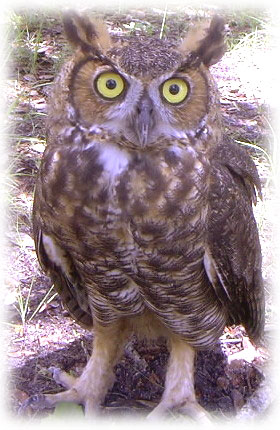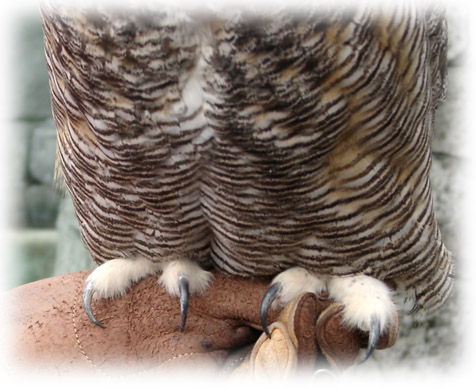Native to North America and the second largest owl in North America, the Great Horned Owl is used in falconry relatively infrequently. It is the fiercest and most powerful of the North American owls. The male owl has a softer hoot consisting of 5 notes while the female has a much louder, deeper, hoot with 7 notes.
 |
An adult Great Horned Owl |
 |
An adult Great Horned Owl's feet |
Trivia
The Great Horned Owl is sometimes called the Cat Owl due to the tufts on her head and the shape of the tufts. In the wild this bird will hunt and kill cats, as well as rabbits, woodchuck, mice, ducks, geese, skunks, snakes, crayfish, large insects, and chickens. When hunted for falconry this bird will hunt rabbits and squirrels well as well as ducks. In the wild these birds have sometimes been observed to exclusively eat brains.
The Great Horned Owl is typically found in conifers and hardwoods as well as cliffs being versatile and flexible even in its nest choices. A solitary bird, except for nesting season, it will usually take over a hawk or crow nest, but can nest on the ground.
Falconers who fly diurnal owls sometimes attach tiny glow sticks or LED lights to the anklet so they can track the bird without a bell. There is some thinking that the bell sound may put her hunting at a disadvantage, particularly if she is hunting at night. Others have tried using fluorescing paints on the anklet and jesses, however the safety of that is unknown for the bird, whether it is ingested or just sitting against her skin for long periods of time.
Links
Maine biologists nab owl taking heads off chickens (actually common Great Horned Owl behavior as mating season starts up)
https://www.owlpages.com/owls/articles.php?a=65